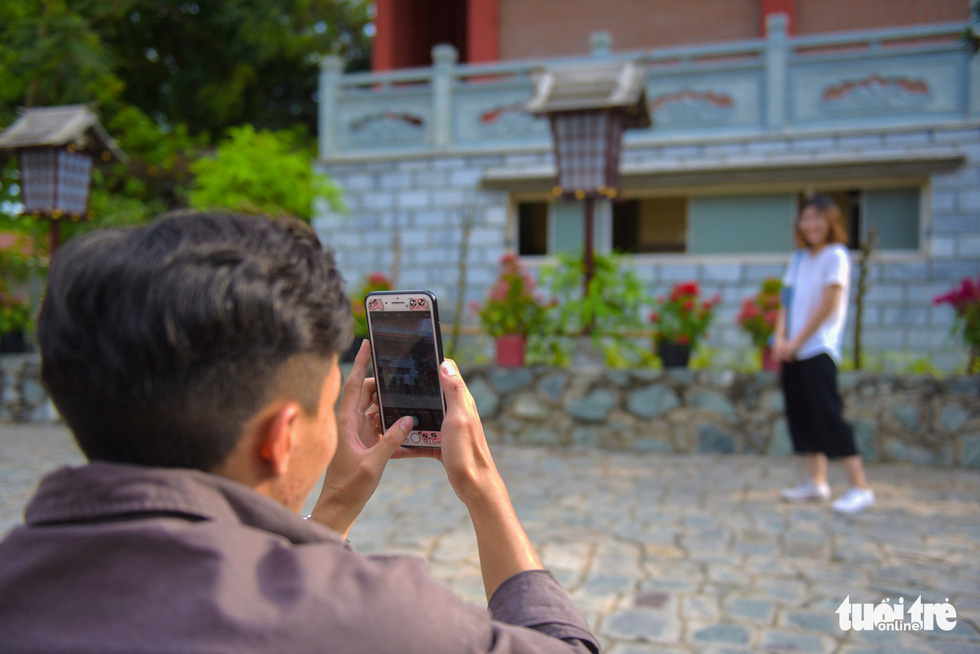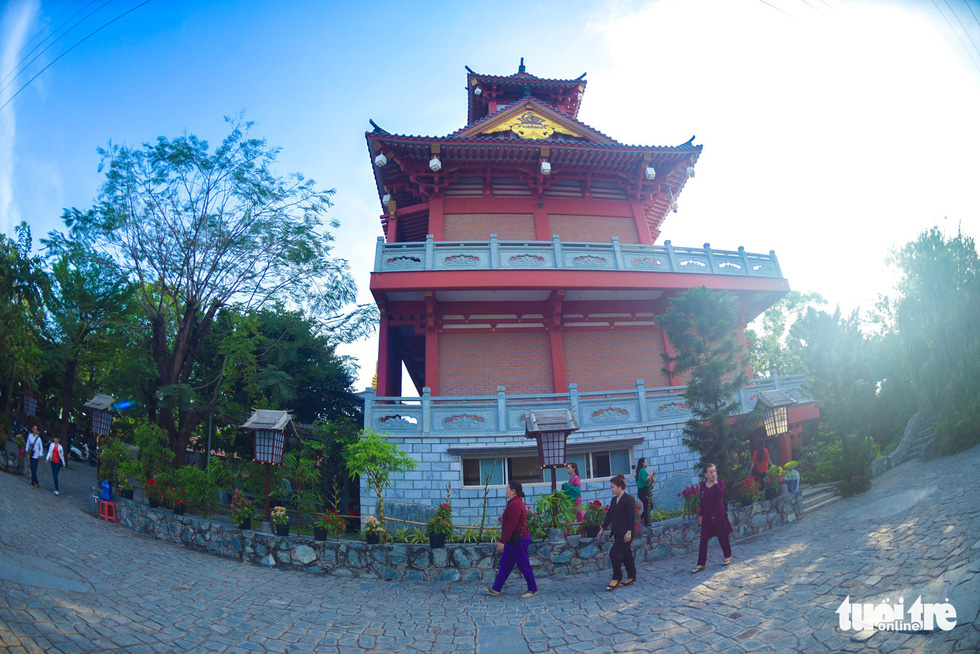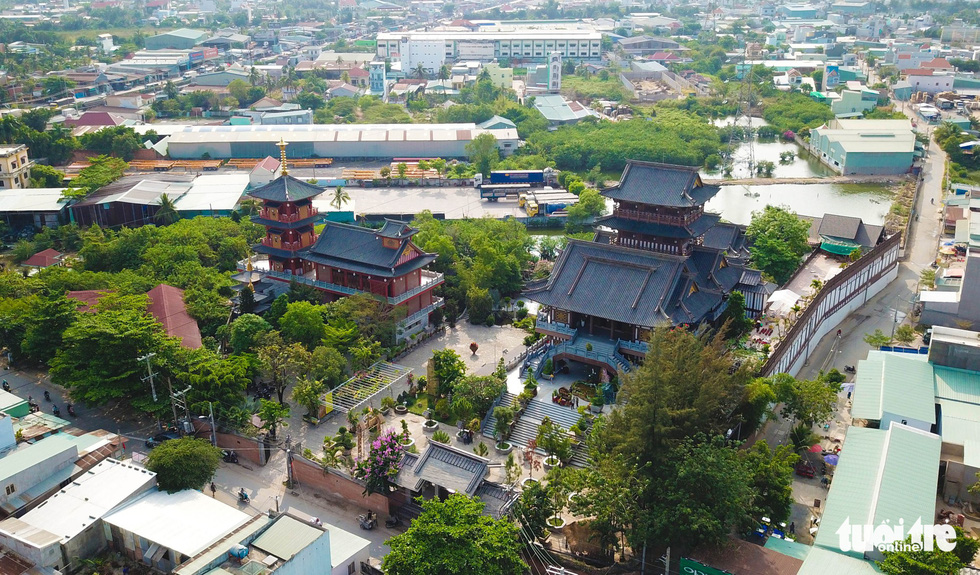Situated in District 12, Khanh An Monastery offers not just the harmonious atmosphere, but also spiritual courses such as meditation. The venue has emerged as a new check-in hotspot thanks to its architecture.
Khanh An monastery began as a humble pagoda erected by Zen master Tri Hien in 1905. A well-off household later donated a six-hectare land plot for its expansion.
The then pagoda was neatly positioned between An Loc Dong and Hanh Phu villages, now known as District 12’s An Phu Dong Ward. It used to be the rally ground for Vietnamese revolutionists during the French colonial time, hence destroyed and sabotaged multiple times.

After many destructive convictions and through the test of time, the pagoda remained merely a shadow of its former self, consisting of only a handful of derelict, bamboo-based worshipping houses here and there.
In 2006, the pagoda underwent a massive renovation, with only finished after a decade, resulting in a magnificent monastery with a change of moniker to Khanh An Monastery.
Constructed mainly out of wood, the monastery enjoys three quintessential hues – the brownish color of wooden origin, the white emanation from chalkstone, and the yellow-adorned designs neatly embedded in every corridor. In overall, the scheme resembles a traditional Japanese temple.

The four-story sanctum, made from wood and stone, and aptly named “Awakening Buddha”, functions much similar to the main hall of Khanh An monastery. Here Buddhists and monks can pray and meditate in reverie and trance without bother.
Additionally, hexagonal paper-wrapped lanterns can be found all over the premise. These are thought to boost the ambient effect, as they are commonly found in traditional Japanese festivals.
Below are some photos of Khanh An Monastery taken by Tuoi Tre (Youth) newspaper.
 |
| The wooden door leads into the main sanctum of “Awakening Buddha”. |
 |
| Japanese-inspired architecture can be found all around Khanh An monastery. |
 |
| The monastery adopts Mahayana Buddhist sect feature, signifying its Eastern Asia’s heritage. |
 |
| Japanese-inspired architecture can be found all around Khanh An monastery. |
 |
| The monks’ recuperation place and guesthouse here greatly resemble those of Japanese origins with wooden or pseudo-wooden structure in combination with red paint. |
 |
| A woman is pictured in the middle of revered praying in the sanctum. |
 |
| Selfies and check-in photos are free-for-all. |
 |
| The sanctum’s rear functions as the resting place for monks and Zen masters. |
 |
| With scrutinized and careful construction techniques, the monastery looks good as new to visitors despite the fact that it has been built for a while. |
 |
| Buddhists and monks pray, meditate, as well as offer incense here in the sanctum. |
 |
| The peaceful garden surround the monastery. |
 |
| Selfies and check-in photos are free-for-all. |
 |
| Concurrently, the monastery is endorsing the immersion the Buddhist teaching into mundane life via meditation course, among other things. |
Like us on Facebook or follow us on Twitter to get the latest news about Vietnam!
















































